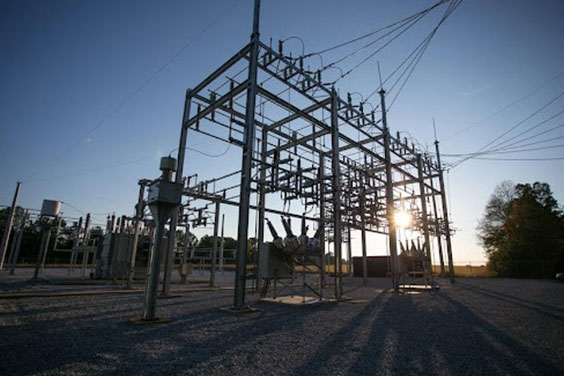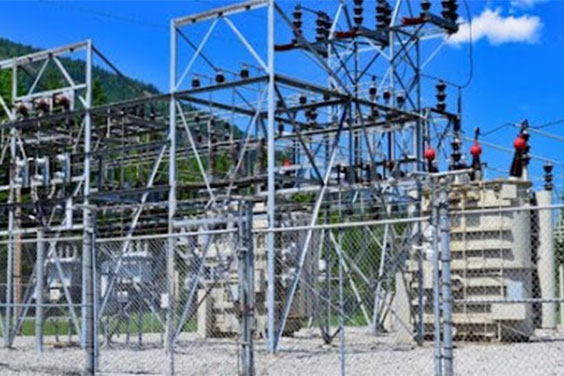The substation is an important set of equipment reducing the high voltage of power transmission to that suitable for customer usage.
Electric substation equipment includes instrument transformers, current transformers, potential transformers, conductors, insulators, isolators, busbars, lightning arrestors, circuit breakers, relays, capacitor banks, batteries, wave trapper, switchyard, metering and indicating instrument, equipment for carrier current, prevention from surge voltage, the outgoing feeders.
Another vital part of the substation is the electric switchgear. It breaks, makes, and carries the normal load of current.
Then comes, compact substation manufacturers that ensure that energy is transformed in secondary distribution from mid voltage to low voltage.
Hence, hiring a good switchgear company is the need of the hour.
What is Indoor Substation?
As the name suggests, a substation that is set inside the building is called an indoor substation. It is used for 11,000V, but if the surrounding is impure or is contaminated, it can be erected up to 33,000V to 66,000V.
Examples of indoor types of substations are storage batteries, fire-fighting equipment such as water buckets, fire extinguishers, etc.
What is an Outdoor Substation?
The apparatus in this kind of substation is installed outside the premises. The voltage level ranges from 55 kV to 765 kV.
As an example, we can consider a grid substation.
Difference Between Indoor and Outdoor Substations
Below are the key points of difference between an indoor and outdoor substation.
Location
Talking of differences, first, we have a location.
When the equipment is installed inside the setup, it is called an indoor substation. If it is installed outside, it is called an outdoor substation.
Construction
In terms of construction, indoor substations consist of a series of open and enclosed chambers or compartments. The equipment of this installation is arranged in these compartments.
The compartments are divided into control compartment, indicating and metering instruments and protective device compartment, main bus-bar compartment, current transformer, and cable sealing box compartment. All in all, it has a complicated design.
For outdoor switchgears, construction is not as complicated as indoor substations but it requires quite a lot of space. The cost of installation of electric switchgear in this regard is cheaper.
Outdoor substations are of two types- pole-mounted substations and foundation-mounted substations.
In a pole-mounted substation, the equipment is of outdoor types. A high transformation fuse is used for the protection of the high tension transmission line.
For low tension lines, low tension switches are also equipped.
In Foundation Mounted Substation, the equipment is heavy and a bit complex. So, the site selection has to be appropriate.
Voltage
For indoor substations, it is usually up to 11,000 V. It can be extended from 33,000 V to 66,000 V.
For outdoor substations, the voltage is between 55 kV to 765 kV.
Types of equipment
Since the construction is complicated, the equipment is not easily visible.
But, on the other hand, it is clearly visible in outdoor substations.
Handling faulty condition
In an indoor substation, since the setup is made taking note of every minute detail, faults are caught easily whereas in an outdoor substation the situation is different. Faults are not clearly visible, so handling that can get quite complicated.
Maintenance
Indoor substations have complex equipment, so naturally enough, the maintenance in this regard is also very high.
The situation is not as complicated in outdoor substations, so low maintenance can serve the purpose.
Repairing and replacement
Owing to the fitted system, the equipment of an indoor substation, if it requires any kind of repairing or replacement, cannot be done easily even though the fault detection process is easier.
But for outdoor substations, repairing and replacement is a difficult process.
Safety
In terms of safety, an indoor substation is much safer.
Outdoor substation, since it is not complex, is not safe enough.
Clearance
As all the components are individually insulated in an indoor substation, therefore clearance between them is less.
Components such as bus bar, O.H. line are not insulated, hence clearance is more.
Space
Space between equipment is less in an indoor substation. It is more in an outdoor substation.
Escalation
Escalation is less in an indoor substation. It is more in an outdoor substation.
Conclusion
The substation is a very important procedure when it comes to power transmission.
There are several kinds of substations that are mainly classified as indoor or outdoor substations. While these packaged substations could be manufactured by the reliable prefabricated substation manufacturers in a large quantity without any compromise of quality.
Also, a very crucial part of the substation is the substation switchgear and rmu substation. It helps in regulating everything in a timely manner and protects the transformer.
So, if you want to get a reliable switchgear service, you can contact Elecspare as they are one of the most reliable mv switchgear manufacturers.



